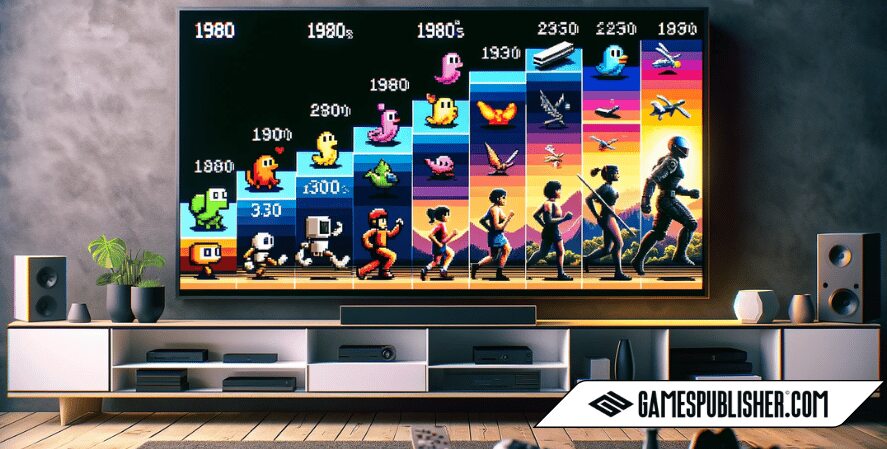Casual games have transformed the gaming landscape, providing quick, engaging entertainment that is accessible to players of all skill levels.
Unlike traditional video games, which may demand extensive time investment and complex skill sets, these game genre offer simplicity and instant gratification, making them a popular choice among a diverse audience.
Overview of Casual Games
What are Casual Games? They are defined by their simplicity and ease of accessibility. These games typically feature straightforward gameplay, short sessions, and minimalistic controls that are easy to learn but challenging to master.
The appeal lies in the ‘pick-up-and-play’ nature, allowing players to engage in gaming activities without substantial commitments.
Popularity and Appeal
Casual genre have captivated a broad audience, ranging from young children to older adults, appealing to seasoned gamers and novices alike. Their widespread appeal can be attributed to their non-intimidating mechanics and the ability to provide a quick escape from everyday routines.
The simplicity of these games, combined with the satisfaction of achieving high scores and completing levels, creates a compelling entertainment medium across various demographics.
Evolution of Casual Games

Historical Development
Casual games have evolved significantly since their inception. Early forms of these games can be traced back to classic arcade games like ‘Pac-Man‘ and ‘Tetris,’ which laid the groundwork for simplicity and accessibility.
Over the decades, these games have morphed from simple arcade machines to major features on consoles and, more recently, to dominating the mobile and online gaming spaces.
Technological Advancements
The rise of smartphones and tablets has revolutionized the accessibility and development of the casual genre in gaming. Advances in technology have allowed developers to create more engaging and visually appealing games, which are easily distributed through app stores and social media platforms, reaching a vast network of users globally.
Types of Casual Games
1. Puzzle Games
Games like ‘Candy Crush’ and ‘Tetris’ remain iconic in the casual game category. They rely on simple, addictive gameplay mechanics that challenge players to beat their scores or advance through increasingly difficult levels. The psychological satisfaction derived from solving puzzles makes these games particularly addictive.
2. Strategy and Simulation Games
Casual strategy games like ‘The Sims‘ and ‘Plants vs. Zombies‘ offer players the chance to explore strategic thinking in a low-pressure environment. These games combine easy-to-understand gameplay with a depth that encourages longer play sessions without overwhelming the player.
3. Word and Trivia Games
‘Words with Friends‘ and ‘Trivia Crack‘ are prime examples of casual games that double as educational tools and social platforms. They facilitate mental exercise, social interaction, and competitive spirit, making them popular among users who enjoy intellectual challenges.
The Role of Casual Games in Social Interaction

Multiplayer and Community Aspects
Casual games often incorporate multiplayer features that make gaming a social activity. Whether through competing against friends in leaderboards or cooperating in gameplay, these games strengthen community ties and encourage social interaction.
- Enhance social bonds through competitive and cooperative play.
- Facilitate interaction, making gaming a shared social experience.
Casual Games on Social Media Platforms
The integration of casual games into social media platforms like Facebook has significantly increased their visibility and accessibility. This synergy allows users to engage in gameplay while staying connected with friends and family, enhancing the social gaming experience.
- Platforms like Facebook have integrated games, enhancing connectivity.
- Allow players to interact while engaging in casual gaming.
Monetization Strategies in Casual Games

In-App Purchases
Many casual games are free-to-play but offer in-app purchases as a revenue model. These purchases might include life refills, special abilities, or cosmetic items, which enhance gameplay or aesthetics without disrupting the game balance.
- Common items: Life refills, special abilities, cosmetic enhancements.
- Strategy: Offer free gameplay with optional purchases for enhanced experiences.
Advertisements
Advertisements are another prevalent monetization strategy in casual games. Developers must balance ad frequency and player experience to ensure that commercials do not detract from the enjoyment of the game.
- Balance is key: Ad frequency must not detract from the game experience.
- Ads provide a revenue stream without upfront costs to players.
Impact of Casual Games on the Gaming Industry
Market Influence
Casual games have become a formidable force in the gaming industry, often outperforming more complex games in terms of revenue and user base. Their ease of development and potential for high returns have made them attractive to developers and investors alike.
Influence on Game Development
The success of casual games has influenced the development priorities of larger game studios, prompting them to create games that accommodate wider audiences, focusing on simplicity and accessibility.
Conclusion
Future Trends
As technology continues to advance, we can expect the casual gaming market to innovate further, potentially integrating augmented reality or more advanced social networking features.
The evolution of casual games will continue to shape the gaming industry in unexpected ways.
Final Thought on casual games genre
Casual games have reshaped how people engage with digital entertainment, making gaming a more inclusive and widely enjoyed hobby. From their simple gameplay mechanics to their impact on the gaming economy, casual games prove that sometimes, less is indeed more.
Loading survey...

